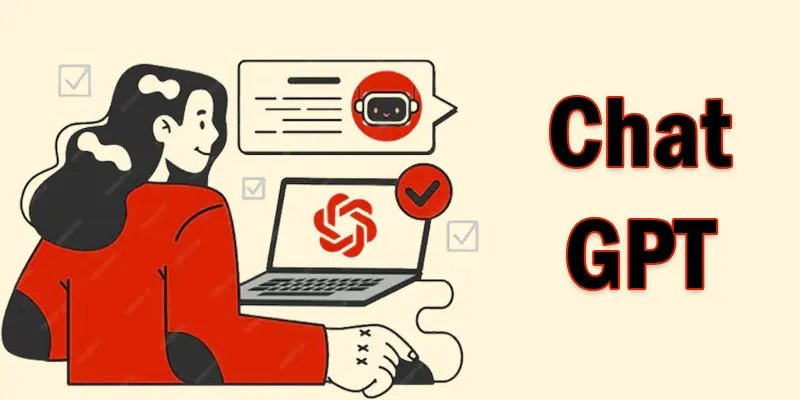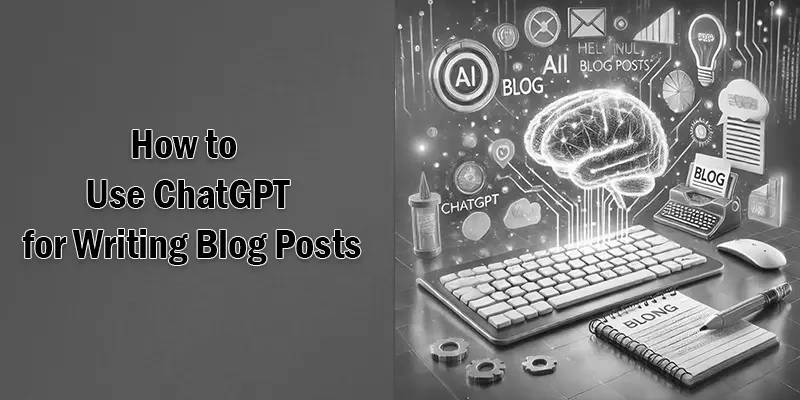Best Tips on How to Use ChatGPT for Writing Blog Posts Like a Pro
Published: 28 Apr 2025
How to Write a Blog Post with ChatGPT?
Did you know that AI tools like ChatGPT can speed up blog writing by 50%? But can AI really write blog posts as well as humans? Some say it’s a game-changer, while others are unsure. If you struggle with writer’s block or spend hours brainstorming ideas, ChatGPT can help you write faster, structure content better, and optimize for SEO. Imagine having a writing assistant that never gets tired and always delivers fresh ideas—sounds amazing, right? This step-by-step guide will show you how to use ChatGPT effectively for creating high-quality blog posts.
Ways ChatGPT Can Help You Write Better Blog Posts
- Idea Generation: ChatGPT suggests fresh blog topics quickly.
- Outline Creation: It helps you organize ideas into a clear structure.
- Draft Writing: ChatGPT can write a rough draft to get you started fast.
- Faster Editing: It rewrites sentences to make your blog sound better.
- Time Saving: Speeds up the whole writing process by giving instant help.
- Boosts Creativity: Offers new angles and examples you might miss.
- SEO Help: Can suggest keywords and phrases to improve search ranking.

A Step-by-Step Guide: How to Write a Blog Post with ChatGPT
In this step-by-step guide, we’ll walk you through how to use ChatGPT to write blog posts easily and efficiently. Whether you’re new to blogging or looking to speed up your writing process, ChatGPT can help you create great content quickly.
- Generating Blog Topic Ideas
- Creating a Blog Post Outline
- Writing the First Draft
- Editing and Refining the Content
- Optimizing for SEO
- Adding Personal Touch and Formatting
Generating Blog Topic Ideas
One of the first steps in blogging is coming up with fresh and interesting topics. ChatGPT can help you brainstorm ideas quickly by giving you a variety of suggestions. Simply tell ChatGPT what your blog is about, and it will generate creative topics for you to choose from.
For Examples
- Give me 10 blog post ideas about mobile operating systems.
- Suggest 5 blog topics related to computer software for beginners.
Creating a Blog Post Outline
Creating a clear and organized outline is essential for writing a great blog post. ChatGPT can help you structure your content, making it easy to follow and more engaging for readers. By breaking your blog into sections, you’ll know exactly what to write in each part, saving time and improving the flow of your post.
For Examples
- Create a detailed blog post outline for [topic].
- Give me an outline for a blog post about [topic], including introduction, body, and conclusion.
Writing the First Draft
Writing the first draft with ChatGPT is simple and efficient. After you have your topic and outline, you can ask ChatGPT to help you create the content for each section. It will give you a solid starting point that you can later improve and personalize. ChatGPT’s drafts are a great way to overcome writer’s block and get your ideas flowing quickly.
For Examples
- Write an engaging introduction for my blog post on [topic].
- Write a detailed paragraph explaining [subtopic] for my blog.

Editing and Refining the Content
Once ChatGPT has created your content, it’s time to make it sound more natural and engaging. Editing is important to ensure clarity, improve flow, and correct any mistakes. You can ask ChatGPT to help polish your content by rephrasing or simplifying sentences.
For Examples
- Make this paragraph clearer and more engaging.
- Rewrite this sentence to sound more natural and concise.
Optimizing for SEO
Search engine optimization, or SEO, raises your blog’s position in search results like Google. ChatGPT can help you integrate relevant keywords, create SEO-friendly titles, and write meta descriptions. With a little tweaking, you can make sure your content is search-engine friendly while still sounding natural.
For Examples
- Help me write an SEO-friendly title for my blog post about [topic].
- Create a meta description for my blog that includes the keyword [keyword].
Adding Personal Touch and Formatting
While ChatGPT can help generate content quickly, adding your personal touch is key to making it unique and engaging. Personalizing the tone, style, and voice ensures your readers connect with your writing. Also, formatting your post with clear headings, short paragraphs, and bullet points makes it easier to read and more visually appealing.
For Examples
- Rewrite this paragraph to make it more engaging and personal.
- Make the content easier to read by breaking it into short paragraphs and adding headings.
Avoid Common Mistakes When Using ChatGPT for Blogging
- Relying too much on AI: Don’t use ChatGPT for everything—always add your own ideas and personality.
- Not fact-checking: ChatGPT may get some facts wrong, so double-check the information.
- Ignoring readability: Ensure the content is easy to read by breaking up long paragraphs and using headings.
- Using Complex Sentences: Keep sentences simple for better readability.
- Forgetting SEO: Don’t skip optimizing your content for search engines; include keywords naturally.

Conclusion About How to Write a Blog Post With Chatgpt
We’ve covered How to Use ChatGPT for Writing Blog Posts: A Step-by-Step Guide in detail. I highly recommend giving ChatGPT a try to speed up your writing process and make it more efficient. With the right prompts and personal adjustments, it can help you create engaging content faster. Start using these tips today, and watch how much easier blogging can become!
FAQS – Chatgpt for Blogs
ChatGPT is an AI tool that can help you generate text for various purposes, including blog posts. It uses machine learning to understand and respond to your prompts. You can ask it to suggest ideas, write drafts, or even edit content.
Yes, ChatGPT can generate full drafts for your blog posts. However, it’s important to review and edit the content to ensure it matches your style and voice. Adding your personal touch will make the content more engaging.
Yes, ChatGPT can assist with SEO by suggesting keywords and writing SEO-friendly content. You can ask it to generate meta descriptions and optimize your text for better search engine ranking. Just remember to review and tweak it as needed.
To make AI-generated content sound natural, ask ChatGPT to refine or rewrite parts that feel stiff. You can also add your own touch by adjusting the tone or adding personal examples. It’s all about personalization!
Absolutely! Using ChatGPT regularly can save you time and help you maintain a consistent writing flow. Just remember to keep your content personal, engaging, and relevant to your audience.
Yes, you can definitely use ChatGPT as a freelance writer. It helps generate ideas, create drafts, and refine your writing. However, always personalize the content to make it unique and align with your client’s voice.
To use ChatGPT for writing, start by providing clear prompts like “Give me blog ideas on [topic]” or “Write an introduction for [topic].” You can also ask it to help with editing or improving readability. Just remember to review and adjust the content to match your style.
Yes, it is legal to use ChatGPT for writing blogs. However, you should ensure the content is original and fact-checked. Always avoid plagiarism and add your personal touch to make the blog your own.

- Be Respectful
- Stay Relevant
- Stay Positive
- True Feedback
- Encourage Discussion
- Avoid Spamming
- No Fake News
- Don't Copy-Paste
- No Personal Attacks

- Be Respectful
- Stay Relevant
- Stay Positive
- True Feedback
- Encourage Discussion
- Avoid Spamming
- No Fake News
- Don't Copy-Paste
- No Personal Attacks





